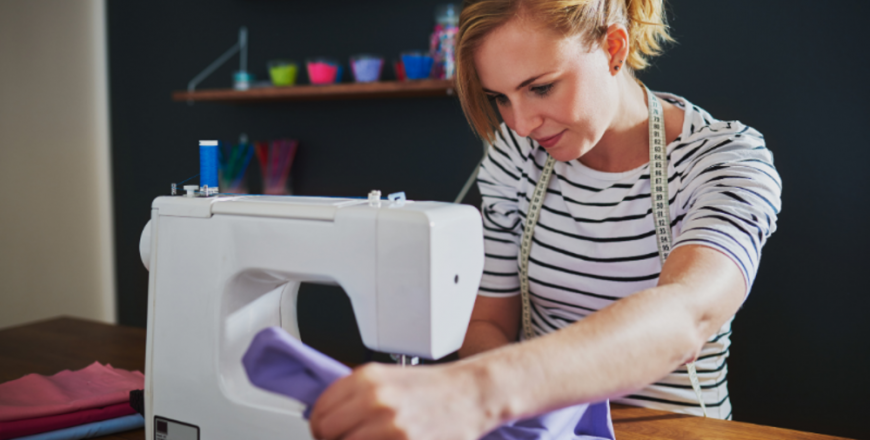
On a garment maker apprenticeship course, you’ll help construct garments by bringing designs to life, following specifications and quality standards.
Working in the clothing industry means creating high-quality garments for the fashion industry, such as custom-fitted suits, one-of-a-kind designer apparel, costumes for opera and theatre, and luxury fashion and couture goods seen on catwalks throughout the world.
You might work on one-of-a-kind pieces or clothing prototypes that will be mass-produced. You will become an experienced sewer, able to use sewing machines and hand-stitching techniques.
You will utilise a selection of materials and trimmings for the design. Your position will involve a high level of accuracy, rigorous attention to detail, and strong time management skills, as it may force you to work under pressure to meet client or season deadlines.
You would typically collaborate with a designer and pattern cutter in charge of the final product’s assembly, finish, and look.
What you’ll learn
On a garment maker apprenticeship course, you’ll learn to:
- Choose, prepare, and operate sewing machines such as lockstitch machines and blind hemmers and make machine modifications for different materials.
- Make a completed outfit by assembling fabric components.
- Select and use different sewing needles for various materials, such as size, diamond point, and ballpoint needles.
- Select and employ other attachments, such as an adjustable presser foot, zipper foot, seam guide, and appliqué foot.
- Match fabric prints, checks, and stripes throughout the garment construction process.
- Sew various seam types, including as flat seams, lapped seams, and overlocked seams.
- Set up and operate pressing machines such as steam irons, block presses, trouser presses, and steamrollers; press clothes
- Measure and choose clothes while keeping important measurement points, body shape, and silhouette in mind.
- Complete records and technical paperwork are necessary, such as production make-up sheets and work dockets.
- Inspect the quality of construction throughout the garment make-up process and, if required, alter techniques.
- Identify, analyse, and correct faults in apparel such as poor fit, size, misaligned seams, fabric damage, incorrect labelling, and returns.
- Make and put into action a production sequence and assembly procedure.
Entry requirements
- Depending on the employer, but likely GCSEs or equivalent qualifications or relevant experience.
- Apprentices without level 2 English and maths will need to achieve this level before taking the end-point assessment.
Assessment methods
The End Point Assessment comprises three distinct assessment methods:
- Project: garment production, project report and questioning
- Skills test with questioning
- Interview
Duration, level, subjects and potential salary upon completion
- Duration: 18 months
-
Level: 3 – Advanced Apprenticeship
- Relevant school subjects: DT and art
- Potential salary upon completion: £19,000
Apprenticeship standard
More information about the Level 3 Garment Maker Apprenticeship standard can be found here.
Apprenticeship end point assessment
For more information about the End Point Assessment Process, please read the Institute of Apprenticeships’ information page.
